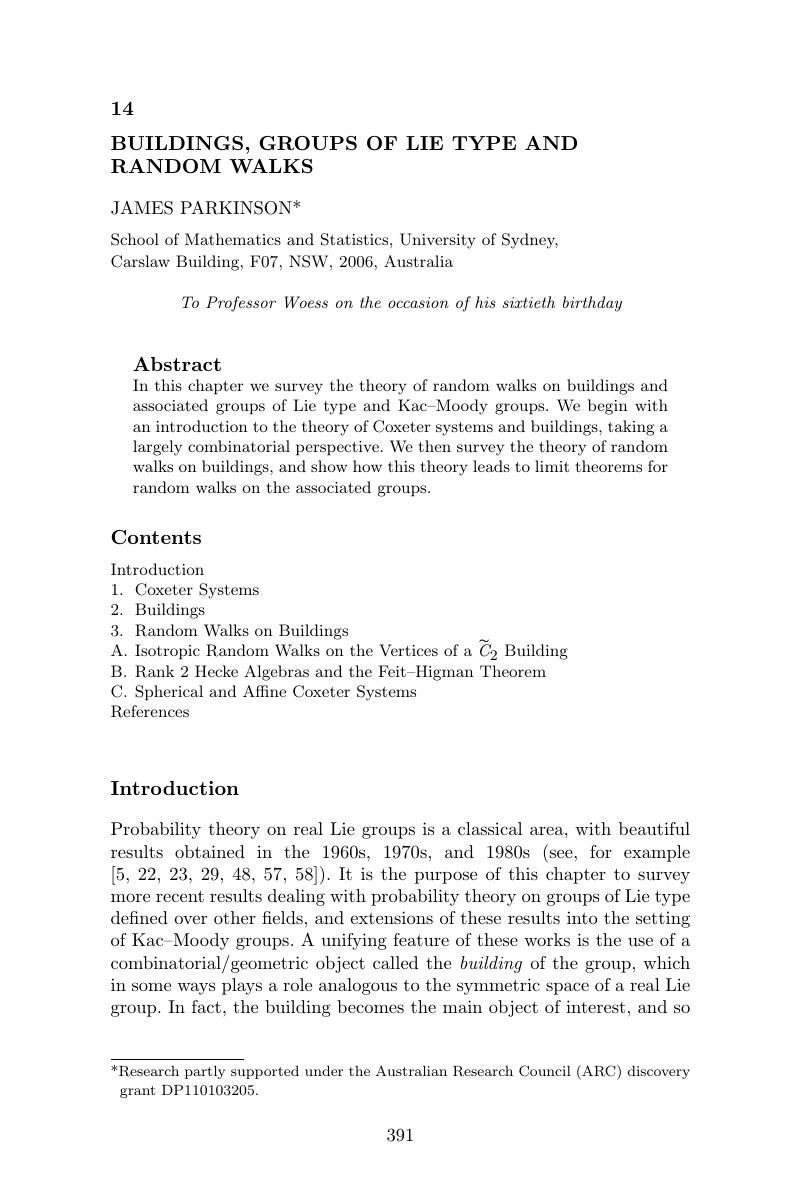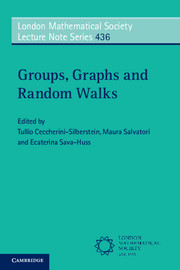Book contents
- Frontmatter
- Contents
- Preface
- Conference Photographs
- 1 Growth of Groups and Wreath Products
- 2 Random Walks on Some Countable Groups
- 3 The Cost of Distinguishing Graphs
- 4 A Construction of the Measurable Poisson Boundary: From Discrete to Continuous Groups
- 5 Structure Trees, Networks and Almost Invariant Sets
- 6 Amenability of Trees
- 7 Group-Walk Random Graphs
- 8 Ends of Branching Random Walks on Planar Hyperbolic Cayley Graphs
- 9 Amenability and Ergodic Properties of Topological Groups: From Bogolyubov Onwards
- 10 Schreier Graphs of Grigorchuk's Group and a Subshift Associated to a Nonprimitive Substitution
- 11 Thompson's Group F is Not Liouville
- 12 A Proof of the Subadditive Ergodic Theorem
- 13 Boundaries of Zn-Free Groups
- 14 Buildings, Groups of Lie Type and Random Walks
- 15 On Some Random Walks Driven by Spread-Out Measures
- 16 Topics on Mathematical Crystallography
- References
14 - Buildings, Groups of Lie Type and Random Walks
Published online by Cambridge University Press: 20 July 2017
- Frontmatter
- Contents
- Preface
- Conference Photographs
- 1 Growth of Groups and Wreath Products
- 2 Random Walks on Some Countable Groups
- 3 The Cost of Distinguishing Graphs
- 4 A Construction of the Measurable Poisson Boundary: From Discrete to Continuous Groups
- 5 Structure Trees, Networks and Almost Invariant Sets
- 6 Amenability of Trees
- 7 Group-Walk Random Graphs
- 8 Ends of Branching Random Walks on Planar Hyperbolic Cayley Graphs
- 9 Amenability and Ergodic Properties of Topological Groups: From Bogolyubov Onwards
- 10 Schreier Graphs of Grigorchuk's Group and a Subshift Associated to a Nonprimitive Substitution
- 11 Thompson's Group F is Not Liouville
- 12 A Proof of the Subadditive Ergodic Theorem
- 13 Boundaries of Zn-Free Groups
- 14 Buildings, Groups of Lie Type and Random Walks
- 15 On Some Random Walks Driven by Spread-Out Measures
- 16 Topics on Mathematical Crystallography
- References
Summary

- Type
- Chapter
- Information
- Groups, Graphs and Random Walks , pp. 391 - 443Publisher: Cambridge University PressPrint publication year: 2017
References
- 1
- Cited by



